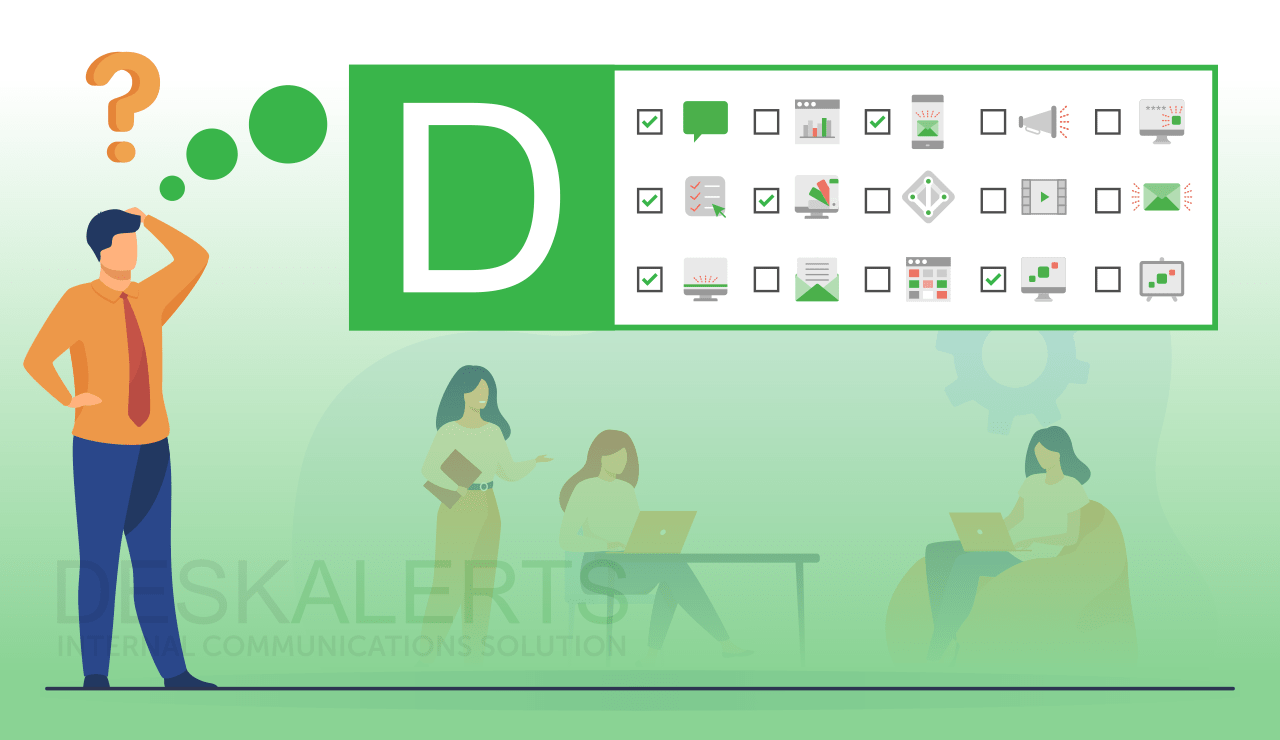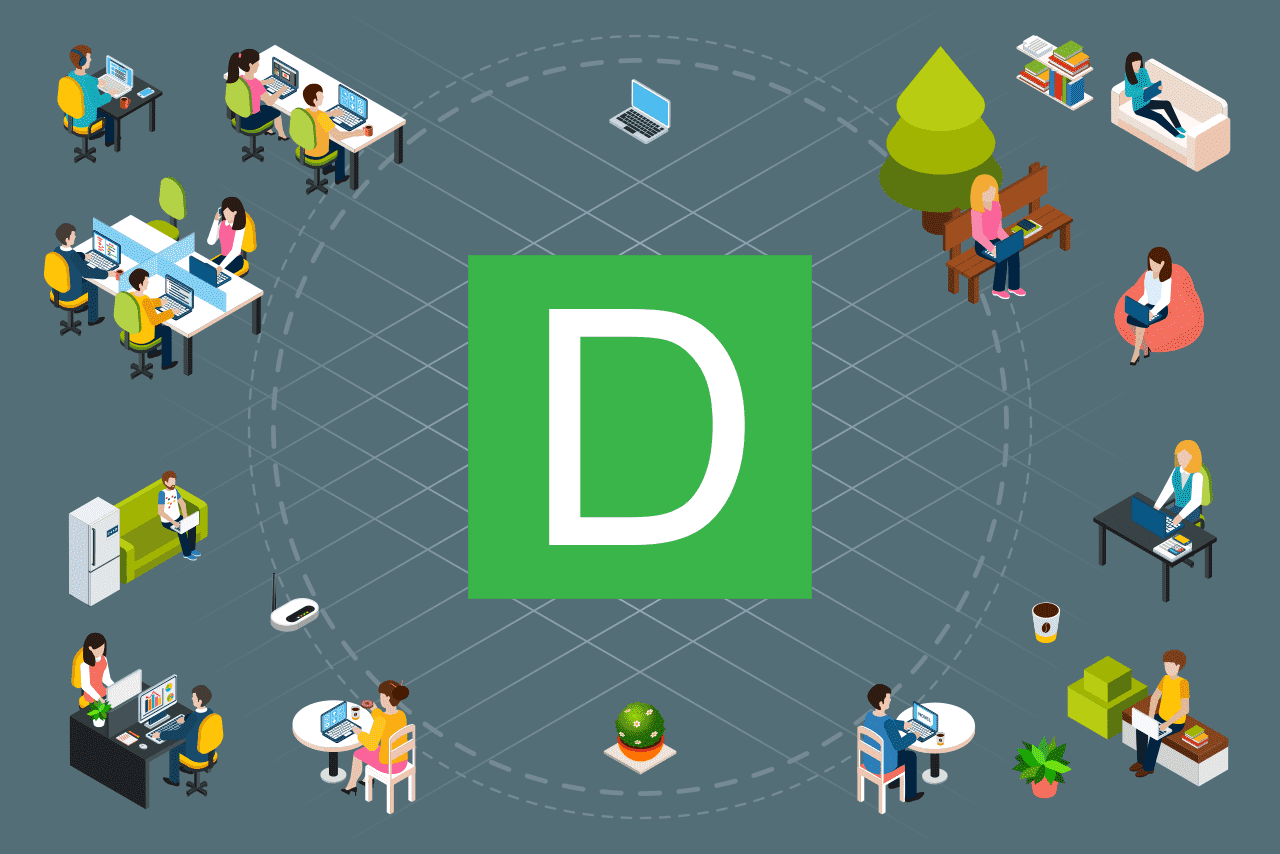 No matter what type of business you have or what industry you’re in, internal communication in an organization is critical to ensure that your company performs well. It helps to build a cohesive team, where everyone understands their role, the company goals, and knows where to find important information.
No matter what type of business you have or what industry you’re in, internal communication in an organization is critical to ensure that your company performs well. It helps to build a cohesive team, where everyone understands their role, the company goals, and knows where to find important information.
Unfortunately, around 60% of companies don’t have a long term internal communication strategy, according to a 2018 study by Arthur J. Gallagher & Co.
And when organizations fail to communicate effectively with their people it can result in lost productivity, decreased profits, employees who are disengaged, and the inability to retain valuable staff members.
The good news is, there are many ways that your organization can turn its internal communications woes around. Having a strategy, and investing in the right tools to help ensure your employees stay informed is the first step to improving communications within your workplace.
Creating engaging content and using innovative delivery channels is one of the best ways to communicate in the modern workplace, and is easily achievable thanks to digital solutions.
What is internal communications software?
Internal communications software is a way of communicating with employees using digital technology. There are many different types of internal communications software, but generally, they provide a dedicated means of communicating internally within an organization, outside of standard functions such as email or an intranet page.
Some internal communications software enables employees to initiate conversations with their colleagues and managers, generally via a chat function.
Email fatigue is a major problem for internal communication in an organization, meaning many can no longer rely on sending urgent communications via the email system - too many emails get unread or employees view it as “corporate spam”.
Similarly, internal communications software systems that have a chat function can see “chat flooding” where employees contribute lots of irrelevant information, and people tune out and miss anything important.
To avoid these issues, there are internal communications systems that deliberately exclude two-way communication such as chat in order to be invasive and get employees’ attention. These notification systems are designed for management to quickly communicate important information - including urgent notifications about critical situations - and ensure that all employees see the information.
If you are unsure whether your organization needs this type of internal communication software, check out the scenarios below, and answer the questions to determine if this path is right for you.
Questions to ask to determine if you need internal communication software
1. How big is your company?
Size can determine whether the software is right for your company’s internal communications. Consider how many people work in your organization, and how many of them should receive information.
If you have a very small company with only a few employees, it, probably not worthwhile investing in internal communications software. Small teams can usually communicate well face-to-face and other platforms like Teams, Asana, or Slack can be a good way to collaborate and share information.
For other sizes of organizations, internal communications needs will vary:
- Small businesses (up to around 50 employees) generally need an internal communications system for basic information sharing and so that team members can chat and connect with one another. For these businesses, they can usually use a simple internal comms tool with basic features. They shouldn’t overlook the need to have a system dedicated to sending emergency and other urgent communications to employees though, because they can still be affected by situations that require them to communicate quickly, for example, a fire, inclement weather, or an IT outage.
- Medium-sized organizations (around 50 to 1000 employees) have more complex needs. They may have multiple teams within the organization, and even offices in multiple locations. For these businesses, building a strong corporate culture, sharing information both locally and more broadly, and ensuring news, files, and other information are distributed will be a priority.
- Large organizations (with 1000+ employees) also have multiple teams, typically working at multiple locations. However, they are more likely to have additional internal communications needs like language and cultural barriers, geographic barriers, different employees in different time zones, competing sources of information within the same company, and more need for regulatory and compliance communications. They need a way to quickly communicate with more than 1000 people at once or to send to niche audiences such as geographic or work teams. A flexible software solution is needed to manage all of this.
2. What internal communications challenges are you experiencing?
You can’t find an effective solution if you don’t know what your problems are in the first place. A lot of guesswork can go into this, but if you don’t look to address specific issues you could end up making the wrong choice.
If you recognize that you have any of these specific challenges, you should consider an internal communications software solution, such as DeskAlerts, for your company:
- The communications channels that you currently use have failed to deliver information on time.
- When the internet and email systems are down you haven’t been able to communicate with employees to let them know because you don’t have back up communications channels in place.
- When there is a known IT outage, your help desk staff waste a lot of time repeating information when may employees call about it.
- You have a remote workforce or a geographically dispersed one that is hard to keep in touch with.
- There have been times when important information you’ve emailed has been ignored or not even seen by employees.
- You notice that many employees seem to have no idea about what is going on in the company and aren’t really contributing well to its shared goals.
Some of the ways an internal communication software system can overcome these challenges include:
- Sending intrusive alerts to employees to let them know when there is a critical incident.
- Keeping remote employees or those out of the office informed via push notifications on mobile and tablet devices.
- Taking pressure off the help-desk when there is an IT outage by sending alert notifications to affected staff. If the outage is for specialist software that not everyone in the organization uses, you can send to custom audiences so only the relevant staff are included.
- Send information in different languages to a multicultural workforce.
- Schedule any messages, videos, tickers, screensavers, displays etc. in advance.
- Quiz employees to ensure they understand the contents of the important information you have sent.
- Have users acknowledge they have read an important update. Generate a report that shows they indicated they read and understood the information.
>> Learn more about an incident communication <<
3. Does your company plan to make significant changes?

Managing change is difficult, and internal communication in an organization is just one of the many facets that go into a program or project where change is involved.
When things change in the workplace it can be difficult to get everyone on board with change - and this can make achieving success difficult. For change to be successful it’s important that people receive information that is easy to understand, is transparent and open and gives clear guidance on what to do and what people can expect, as well as reasons why the change is necessary.
Many large organizations find that using DeskAlerts has helped them to successfully communicate during a large change project.
One example is our client the Peterborough and Stamford Hospitals in the United Kingdom. They had the challenge of moving everything from three outdated hospital buildings into one state-of-the-art facility. This included safely transferring 600 patients and relocating around 3,500 staff.
The DeskAlerts system was deployed as a cost-effective way of keeping all employees informed throughout the process, with information being able to be sent quickly.
In the lead-up to the move, DeskAlerts was deployed to every PC in the organization. During the move, it was used to notify employees about when certain systems would be offline and moved, as well as any specific issues being caused by the move. This enabled all hospital staff to be kept informed in “real-time”.
4. Do you need to enhance the system you use to alert in an emergency?
Keeping employees safe in an emergency situation is paramount. Unfortunately, many organizations don’t have effective systems in place. Others fall victim to a dangerous mindset where they think they are too small or their needs are too simple for a modern emergency communication system.
Consider:
- Are you certain that the emergency system your business currently uses will notify the relevant employees in a way that they are all guaranteed to receive the information?
- What mass communication system, if any, are you using now?
- What threats and hazards can affect your employees?
- How are you monitoring emerging threats 24/7?
- How will you notify and group your people across geographic areas?
- Were your previous methods of emergency communication efficient and effective?
While DeskAlerts cannot replace the functionality of a classic mass notification system, it can be a perfect addition to your existing systems during an emergency situation to ensure that all possible channels of communication are being used.
But even if you want to start with simple emergency alerting solutions - such as just sending SMS and email messages during critical events like severe weather or IT outages - you’ll want a robust system dedicated to urgent communications that perform well, is fast, and is reliable.
Operating without one can limit productivity and put your people at risk - no matter your company size.
5. Do you plan to send COVID-19 related information?
Whether your team is working remotely because of the pandemic, are out in the field, or are in the office, COVID-19 means there are additional workplace health and safety messages you have a responsibility to communicate to ensure your employees are safe.
Different ways to use a system like DeskAlerts to facilitate the COVID internal communication in your organization include:
- Pop-up reminders about the need to wear masks, use sanitizers, or adhere to social distancing.
- Corporate wallpapers and screensavers with information about staying safe.
- Sending a survey at the start of the workday to ask employees about their current health, or travel plans.
- Sending pulse surveys to determine if employees’ mental health and wellbeing is good or not.
- Sending videos demonstrating proper mask use and hand hygiene.
Is DeskAlerts the right fit for your organization?
DeskAlerts is used for company internal communication by many medium to large-sized organizations in different industries all over the globe. We have more than 700 clients who trust our system to keep their employees informed, engaged, and safe.
Our system enables you to quickly reach every employee in your organization, across a range of channels including pop-up notifications, video alerts, scrolling ticker tape, corporate screensavers, corporate wallpapers, surveys, polls, and quizzes, lock screen alerts, SMS, push notifications and more.
It can be used on any Windows or Mac device, as well as Apple and Android phones and tablets.
Contact us today so we can get a good idea of your business’ unique communications needs, and discuss which of our functions can help you to improve your internal communications. We’ll schedule an online demonstration showing you how the software can work for you.
 Caroline Duncan
Caroline Duncan
 No matter what type of business you have or what industry you’re in, internal communication in an organization is critical to ensure that your company performs well. It helps to build a cohesive team, where everyone understands their role, the company goals, and knows where to find important information.
No matter what type of business you have or what industry you’re in, internal communication in an organization is critical to ensure that your company performs well. It helps to build a cohesive team, where everyone understands their role, the company goals, and knows where to find important information. 






